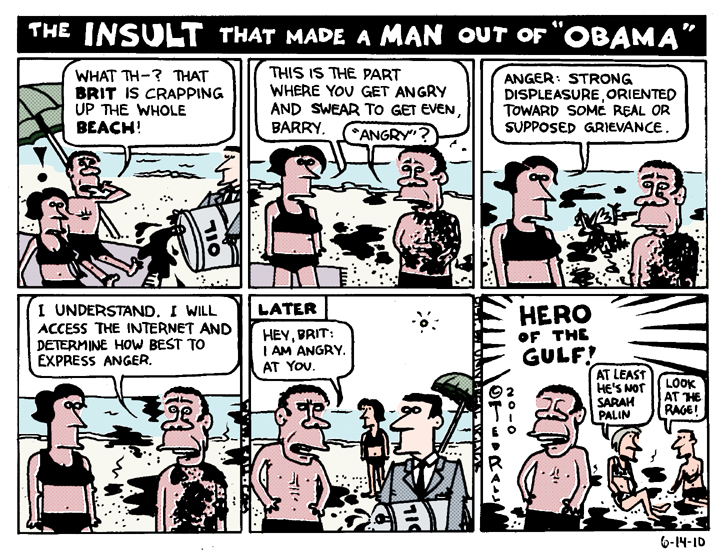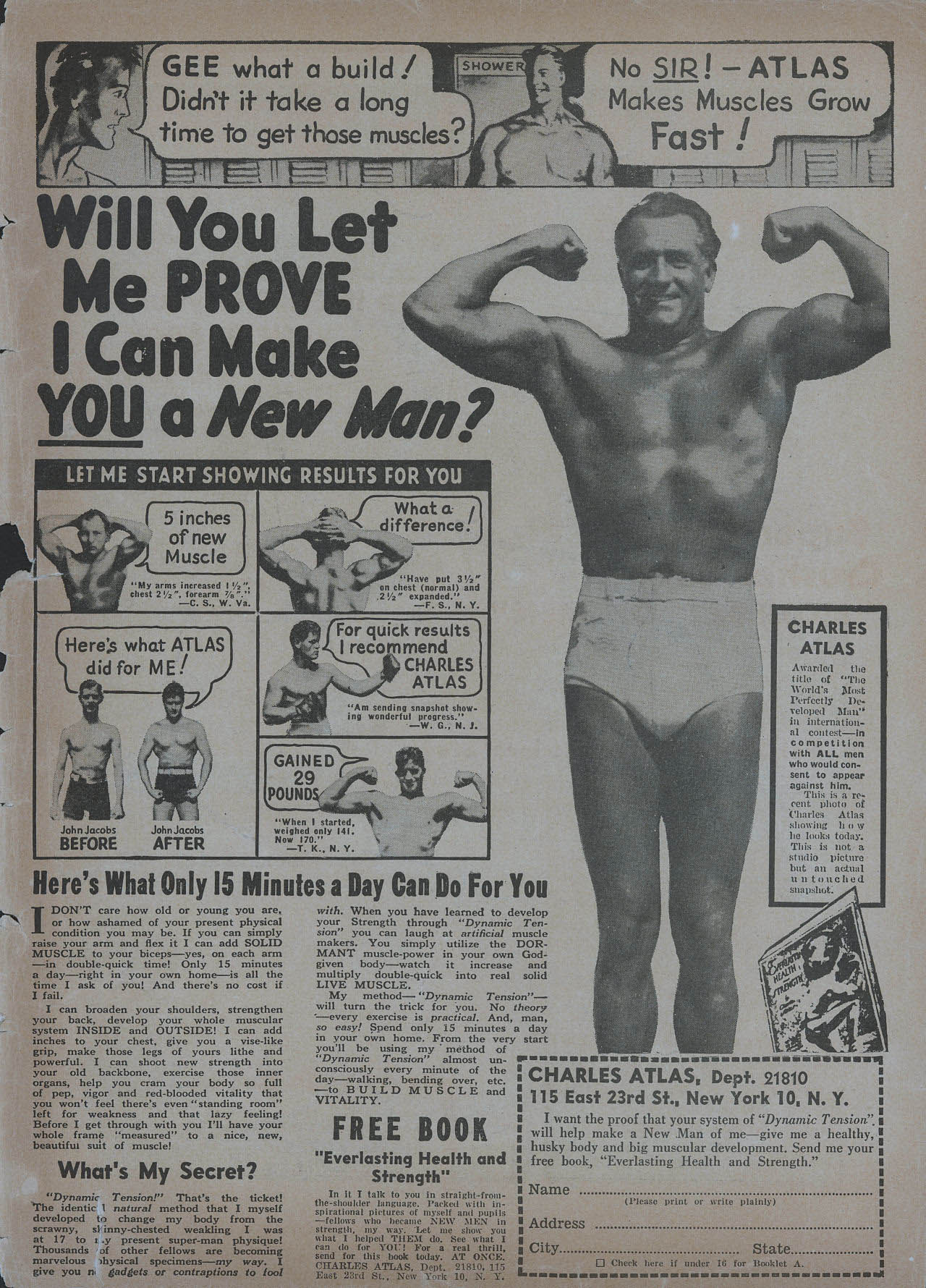
5 Storytelling Tips for Compelling Business Writing Printwand™
The ad appeared regularly in comic books of the 1940s (starring muscle-bound heroes who fit the "Atlas" mold) ("Charles Atlas"). 98-Pound Weakling was originally the 97-Pound Weakling; 1953 Variant of the ad Mac becomes Joe and the sand in the face becomes a direct insult to SKINNY. "Oh Joe! You are a real He-Man after all!"

"Don't Spend Your Life on the Sidelines...Prove to Yourself That I Can
Charles Atlas (born Angelo Siciliano) became the fitness guru and was selling his fitness program booklets by 1930. He used print ads to sell his booklets (as it was essentially the only game in town back then) and began incorporating comic-style artwork as headers for the ads as early as 1937. The ad shown above was the first to primarily.

Charles Atlas Print Ad (1950s) 3 listings
Charles Atlas, orig. Angelo Siciliano, (born Oct. 30, 1892, Acri, Italy—died Dec. 24, 1972, Long Beach, N.Y., U.S.), Italian-born U.S. bodybuilder. Atlas immigrated to the U.S. in 1904. Skinny and weak as a child, he devised a system (later called Dynamic-Tension) that used isotonic exercise to build muscle.. Their standard ad, a common.

CHARLES ATLAS AD NAUSEUM POST CARD Abandoned Treasures
Speaking to The New Yorker in 1993, Charles Roman—in a way, Mac's father—said that President Bush's comparison of Saddam Hussein in the Gulf War to the sand-kicking bully of the Atlas ads made Roman feel "kind of proud" to have created the classic phrase. It's pretty clear that neither Roman—who died July 16, 1999, at the age of 92—nor.

1951 Ad Charles Atlas Bodybuilding Exercise Diet Fitness Advertisement
Enter Charles Atlas, the most popular muscleman of the 1930s. Charles Atlas trained himself to develop from a "scrawny weakling" to one of the most popular musclemen in the 1930s. He (with others) set up a mail-order business to sell a fitness routine. The result was one of the most popular and successful ad campaigns of all time. Take a look:

Vintage Magazine ad for the Charles Atlas muscle building course ca
Charles Atlas >Charles Atlas (1893-1972) embodied the nineteenth-century ideal of the >self-made man—a dream of self-improvement and rapid transformation that >began with a strengthened, healthy body. By 1942, more than 400,000 copies >of the Atlas program of self-development had been sold.. His most famous ad was a cartoon showing a.

The Yeti Speaks! My own Charles Atlas ad parody
Charles Atlas (born Angelo Siciliano; October 30, 1892 - December 24, 1972) was an Italian-American bodybuilder best remembered as the developer of a bodybuilding method and its associated exercise program which spawned a landmark advertising campaign featuring his name and likeness; it has been described as one of the longest-lasting and most memorable ad campaigns of all time.

Hey, Look Who’s Back! CHARLES ATLAS! 13th Dimension, Comics, Creators
Charles Atlas (born October 30, 1892, Acri, Calabria, Italy—died December 24, 1972, Long Beach, New York, U.S.) Italian-born American bodybuilder and physical culturist who, with Frederick Tilney and Charles P. Roman, created and marketed a highly popular mail-order bodybuilding course.. In 1904 Angelo Siciliano immigrated to the United States with his mother and settled in Brooklyn, New York.

Charles Atlas advertising
Charles Atlas was an Italian-American bodybuilder best remembered as the developer of a bodybuilding method and its associated exercise program which spawned a landmark advertising campaign featuring his name and likeness; it has been described as one of the longest-lasting and most memorable ad campaigns of all time.

Charles Atlas ad (from Lois Lane 22, January 1961) Flickr
"Dynamic Tension" is the name Charles Atlas gave to the system of physical exercises that he first popularized in the 1920s. Dynamic Tension is a self-resistance exercise method which pits muscle against muscle. The practitioner tenses the muscles of a given body part and then moves the body part against the tension as if a heavy weight were being lifted.

The Charles Atlas DynamicTension Fitness Course Interesting Thing of
Produced by Charles Atlas and his business partner, the "Insult that made a man out of Mac" advertisement inspired thousands to take up physical exercise in the 1930s. In the ad, titular.

Charles Atlas Ad Parody Ted Rall's Rallblog
Famous "98 pound weakling" Charles Atlas ad from 1972 Color version of the famous Charles Atlas ad. From a 1972 comic book. You can see it better in the LARGE size.

1944 Joe's BodyFame not Shame. Charles Atlas ad. Bodybuilding
How can you beat the headline, "Hey skinny!…. Yer ribs are showing!". You couldn't sell that these days. FUN FACT: In 1929, Charles Atlas, working with advertising expert Charles Roman, formed Charles Atlas, Ltd. Together, they began this famous campaign, which ultimately made Atlas millions and turned him into an American icon. (Source.

asteroid f Comic Book Ads 8 Charles Atlas.
The ad depicts a very skinny man getting pushed around by a big bully. The skinny kid buys Charles Atlas's Bulking Course and turns into superman.. Charles Atlas believed in building the person up from the inside. He sprinkled words of wisdom and life advice into his training courses. He wanted people to live longer, happier, healthier.

The Ad That Made an Icon Out of Mac — Hogan's Alley
Charles Atlas is a video artist and film director who also does lighting and set design. He is a pioneer in developing media-dance, also called dance for camera. Media dance is work that is created directly for the camera. While Atlas' primary artistic medium is video, he also began to experiment with live electronic performance in 2003.

Vintage Charles Atlas ad Charles atlas, Vintage muscle men, Retro
However, Atlas rebounded with the help of advertising man Charles Roman, and just four years later, Atlas' first national ad for Dynamic Tension appeared in print. Committing to the Lie In that first ad, Atlas declared it "bunk" that muscle development takes a long time, and further affirmed it in an awkwardly worded sentence by stating.